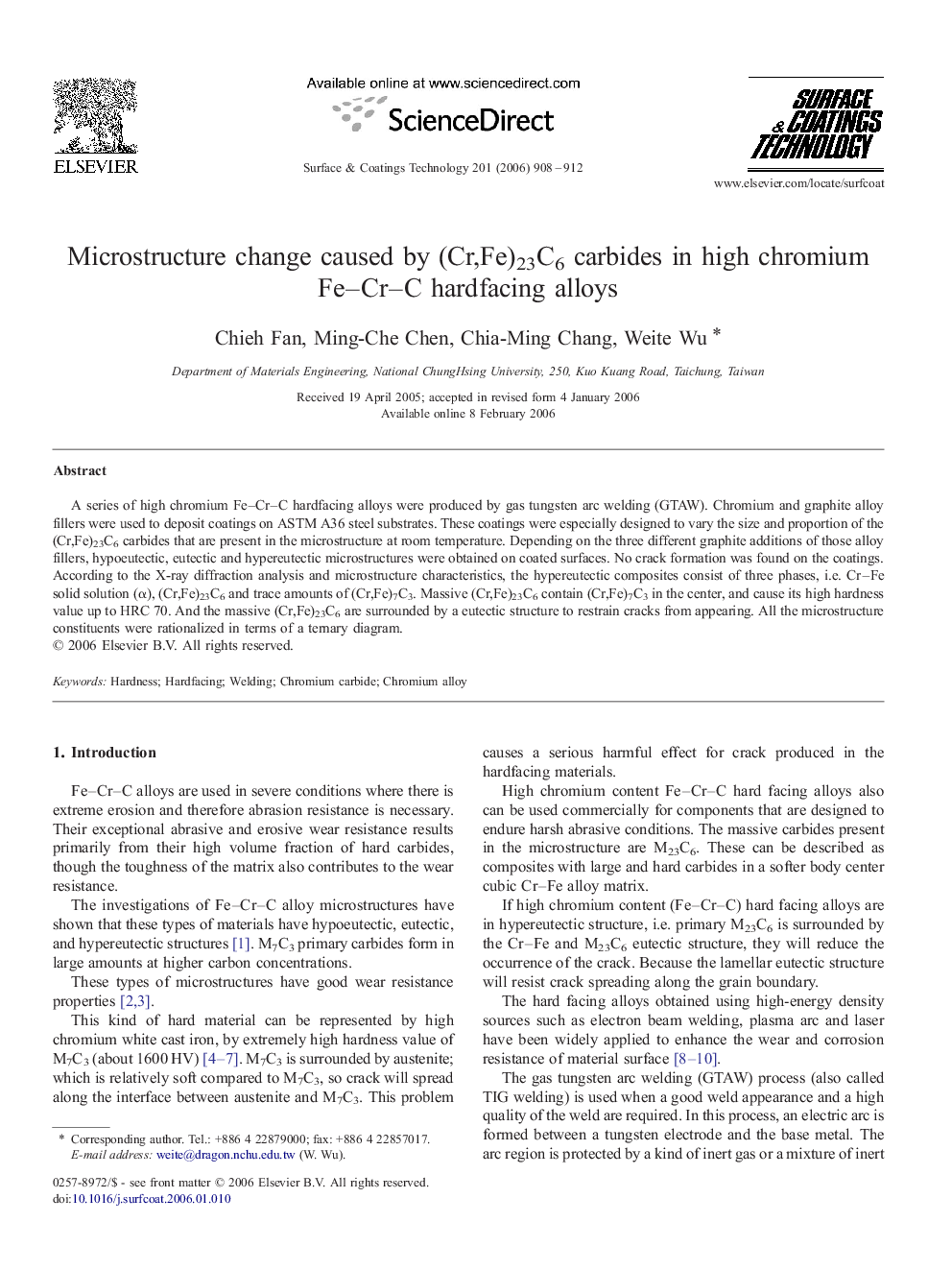| کد مقاله | کد نشریه | سال انتشار | مقاله انگلیسی | نسخه تمام متن |
|---|---|---|---|---|
| 1662128 | 1517700 | 2006 | 5 صفحه PDF | دانلود رایگان |

A series of high chromium Fe–Cr–C hardfacing alloys were produced by gas tungsten arc welding (GTAW). Chromium and graphite alloy fillers were used to deposit coatings on ASTM A36 steel substrates. These coatings were especially designed to vary the size and proportion of the (Cr,Fe)23C6 carbides that are present in the microstructure at room temperature. Depending on the three different graphite additions of those alloy fillers, hypoeutectic, eutectic and hypereutectic microstructures were obtained on coated surfaces. No crack formation was found on the coatings. According to the X-ray diffraction analysis and microstructure characteristics, the hypereutectic composites consist of three phases, i.e. Cr–Fe solid solution (α), (Cr,Fe)23C6 and trace amounts of (Cr,Fe)7C3. Massive (Cr,Fe)23C6 contain (Cr,Fe)7C3 in the center, and cause its high hardness value up to HRC 70. And the massive (Cr,Fe)23C6 are surrounded by a eutectic structure to restrain cracks from appearing. All the microstructure constituents were rationalized in terms of a ternary diagram.
Journal: Surface and Coatings Technology - Volume 201, Issues 3–4, 5 October 2006, Pages 908–912